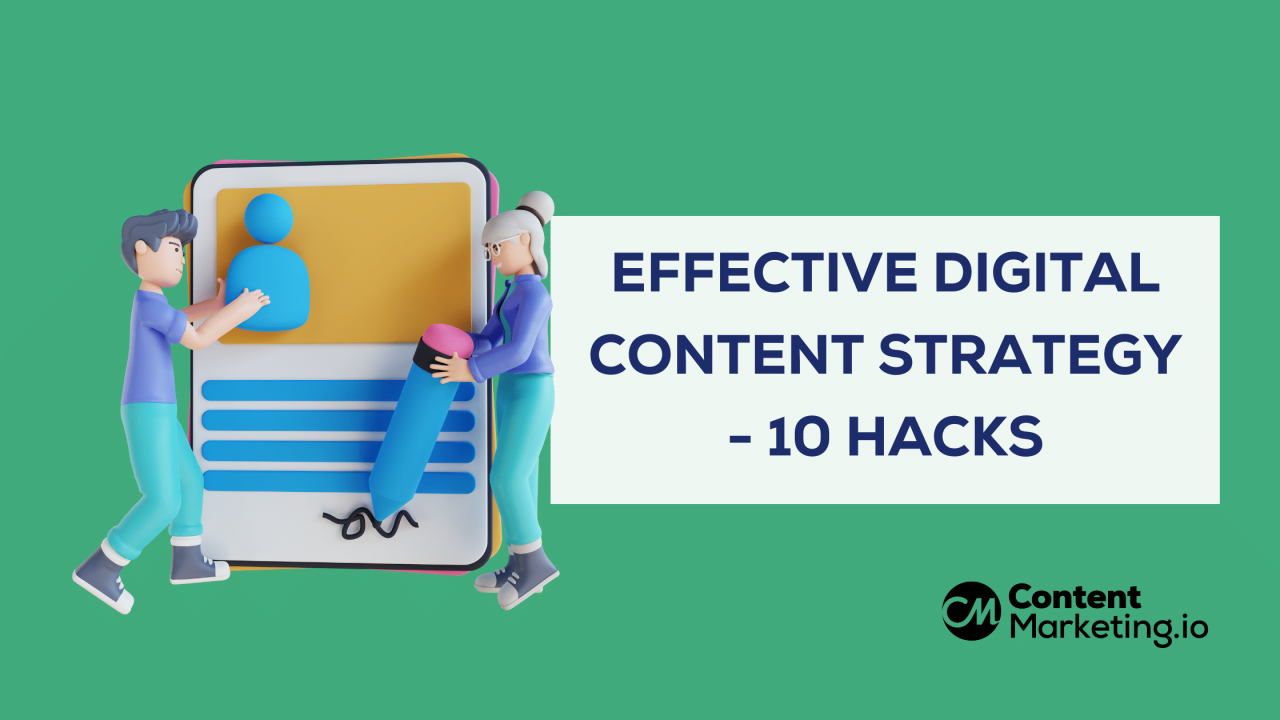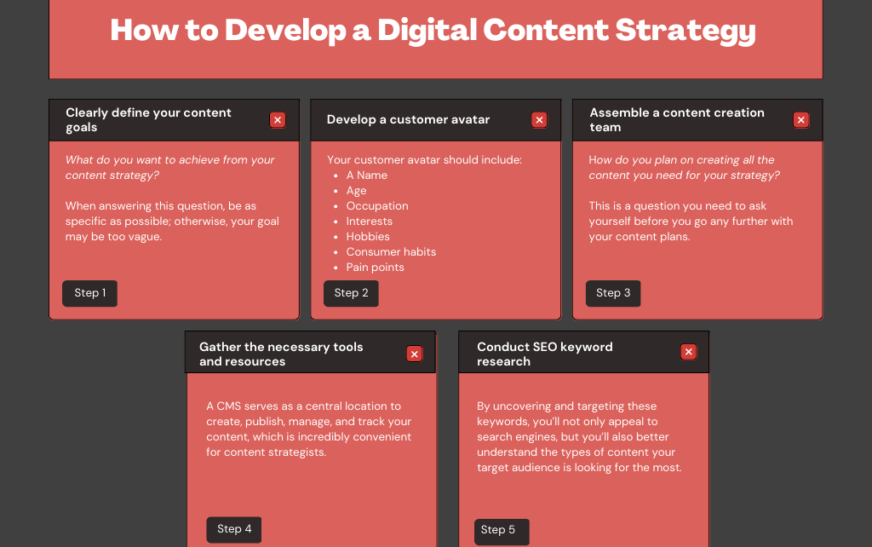With How Digital Tools Can Improve Your Content Strategy at the forefront, discover the key to enhancing your content creation journey and maximizing your online presence.
Explore the power of digital tools in revolutionizing your content strategy and unlocking new levels of success.
Importance of Digital Tools in Content Strategy
Digital tools play a crucial role in enhancing content strategy by providing efficiency, organization, and optimization. These tools not only help in creating high-quality content but also in managing and analyzing its performance effectively.
Enhance customer experience with these digital tools by incorporating Enhance Customer Experience with These Digital Tools in your business strategy. Providing seamless interactions and personalized services will help you build long-lasting relationships with your customers.
Examples of Popular Digital Tools in Content Creation and Management
- Content Management Systems (CMS) like WordPress, Drupal, and Joomla provide a user-friendly platform for creating and publishing content.
- Social media management tools such as Hootsuite and Buffer help in scheduling posts, analyzing engagement, and managing multiple platforms from one dashboard.
- tools like SEMrush, Moz, and Ahrefs assist in research, on-page optimization, and tracking search engine rankings.
- Graphic design tools like Canva and Adobe Creative Cloud enable the creation of visually appealing graphics and images for content.
How Digital Tools Can Streamline Content Creation Processes
- Automation tools such as HubSpot and Marketo can streamline email marketing campaigns, lead nurturing, and content distribution.
- Collaboration tools like Google Workspace and Slack facilitate real-time communication and document sharing among team members working on content projects.
- Analytics tools such as Google Analytics and Hotjar provide valuable insights into audience behavior, content performance, and areas for improvement.
- Project management tools like Trello and Asana help in organizing tasks, setting deadlines, and tracking progress for content creation workflows.
Content Planning and Organization: How Digital Tools Can Improve Your Content Strategy

Digital tools play a crucial role in helping content creators plan and organize their content effectively. These tools offer various features that streamline the process and ensure content is delivered seamlessly across different platforms.
Maximize efficiency within your team by utilizing Maximizing Efficiency with These Digital Tools for Teams. Collaborative platforms and project management tools can streamline communication and improve productivity, leading to successful project outcomes.
Assisting in Planning Content Calendars, How Digital Tools Can Improve Your Content Strategy
- Content Calendar Creation: Digital tools like Trello, Asana, or CoSchedule allow users to create detailed content calendars with scheduled dates, topics, and assigned tasks.
- Automated Reminders: These tools can send automated reminders and notifications to team members about upcoming deadlines or content milestones.
- Collaborative Planning: Content calendars can be shared with team members, enabling collaboration and visibility into the content creation process.
Organizing Content for Different Platforms
- Platform-Specific Templates: Digital tools provide templates tailored to different platforms, ensuring content is optimized for each channel.
- Content Categorization: Tools like SEMrush or HubSpot help organize content based on categories, tags, or s for easy retrieval and distribution.
- Multi-Channel Publishing: Content can be scheduled for publication across multiple platforms simultaneously, saving time and effort.
Collaborating on Content Planning with Team Members
- Real-Time Editing: Tools like Google Docs or Dropbox Paper allow team members to collaborate on content creation in real-time, making updates and revisions seamless.
- Feedback and Comments: Digital tools enable team members to leave feedback, comments, or suggestions directly on the content, fostering better communication and idea sharing.
- Task Assignment: Content planning tools like Monday.com or Wrike enable team leaders to assign tasks, set deadlines, and track progress to ensure timely delivery of content.
Content Creation and Optimization
Creating visually appealing content is essential in capturing the attention of your audience. Digital tools play a crucial role in enhancing the visual appeal of your content, making it more engaging and shareable.
Explore the top digital tools for video content creation to enhance your storytelling and engagement strategies. With Top Digital Tools for Video Content Creation , you can create compelling visuals and captivating videos that resonate with your audience, helping you stand out in the digital landscape.
Visual Content Creation
- Canva: A user-friendly graphic design tool that allows you to create stunning visuals for your content, such as social media graphics, presentations, and infographics.
- Adobe Spark: Enables you to easily create videos, web pages, and graphics with professional-looking templates and design tools.
- Piktochart: Perfect for creating eye-catching infographics and visuals that convey complex information in a visually appealing way.
Optimization Tools
Optimizing your content for search engines is crucial for increasing visibility and driving organic traffic to your website. tools help you analyze s, track rankings, and optimize your content for better search engine performance.
- Google Planner: Allows you to research s relevant to your content and identify high-volume and low-competition s for better performance.
- SEMrush: Provides in-depth analysis, research, backlink tracking, and competitor analysis to help you optimize your content for search engines.
- Yoast : A popular WordPress plugin that helps you optimize your content for by providing real-time suggestions for improving readability and usage.
Improving Content Readability and Engagement
Enhancing the readability and engagement of your content is essential for keeping your audience interested and driving conversions. Digital tools can help you analyze and improve the readability of your content, making it more compelling for your audience.
- Hemingway Editor: Highlights complex sentences, passive voice, and hard-to-read phrases to help you simplify your content and improve readability.
- Grammarly: A writing assistant tool that checks for grammar, spelling, punctuation errors, and suggests improvements to enhance the clarity and effectiveness of your content.
- Readable: Analyzes the readability of your content and provides readability scores, highlighting areas for improvement to make your content more engaging and accessible.
Analytics and Performance Tracking

In the world of digital content strategy, analytics and performance tracking play a crucial role in understanding the impact of your efforts. By utilizing digital tools, you can gain valuable insights into how your content is performing and make informed decisions to optimize your strategy.
Tracking Content Performance Metrics
- Utilize tools like Google Analytics to track key metrics such as page views, bounce rate, time on page, and conversion rates.
- Monitor social media analytics to understand engagement levels, reach, and audience demographics.
- Use email marketing platforms to track open rates, click-through rates, and subscriber behavior.
Understanding Audience Behavior
- Analytics tools provide data on how users interact with your content, including which pages they visit most, how long they stay, and what actions they take.
- By analyzing this data, you can better understand your audience’s preferences, interests, and behavior patterns.
- Identify trends and patterns to tailor your content strategy to meet the needs and expectations of your target audience.
Refining Content Strategy with Data
- Use A/B testing to experiment with different content formats, headlines, and calls-to-action to see what resonates best with your audience.
- Regularly review analytics reports to identify strengths and weaknesses in your content strategy and make data-driven decisions for improvement.
- Adjust your content calendar, messaging, and distribution channels based on performance data to maximize engagement and conversions.
Closing Notes
Embrace the potential of digital tools to elevate your content strategy, engage your audience, and achieve your goals with confidence.



